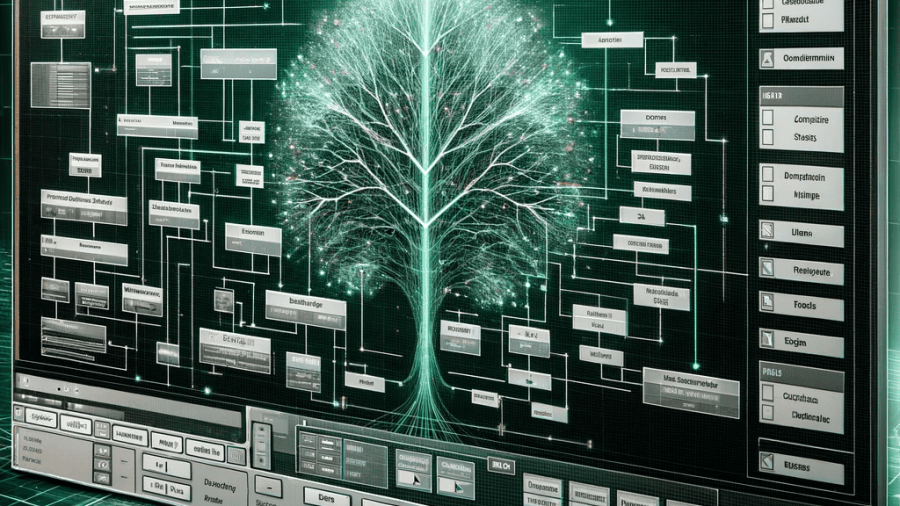Fault tree analysis (FTA) is a powerful tool used in system reliability and safety analysis. It provides a systematic approach to identifying potential causes of system failures and analyzing their probabilities. In this article, we will explore the key components of fault tree analysis, the importance of choosing the right software, and understanding probability in fault tree analysis.
Fault Tree Analysis Overview
What is fault tree analysis and its importance in system reliability?
Fault tree analysis is a graphical tool used to model the various events that can lead to system failures. It is an essential part of reliability and safety analysis, allowing engineers to identify potential failure modes and their causes, thereby enabling effective risk analysis and prevention strategies.
How to create a fault tree diagram for analysis?
To create a fault tree diagram, start with a “top event” representing the system failure. Then, identify the primary events and their logical relationships using gates such as AND, OR, and NOT. This establishes a visual representation of the potential failure paths within the system.
What are the key components of a fault tree?
A fault tree consists of basic events, gates, and the top event. Basic events represent the individual failures or conditions that can lead to the top event, while gates illustrate the logical relationships between these events, determining how they contribute to the top event.
Choosing the Right Fault Tree Analysis Software
What are the essential features to look for in fault tree analysis software?
When selecting fault tree analysis software, it’s important to consider features such as graphical fault tree editor functionality, the ability to create and manage fault tree models, and integration with broader reliability analysis tools. Additionally, software that supports quantitative analysis and sensitivity analysis is highly beneficial.
Comparison of commercial fault tree analysis tools
There are various commercial tools available for fault tree analysis, such as Isograph’s fault tree analysis software. These tools offer advanced features for analyzing fault trees, including the ability to automatically generate fault trees, calculate importance measures, and perform sensitivity analysis to assess the impact of changes in input parameters.
Are there any reputable open-source options for fault tree analysis?
While commercial tools are prevalent, there are reputable open-source options for fault tree analysis. These tools provide a cost-effective alternative for conducting fault tree analysis and offer features comparable to some commercial software, making them suitable for users with budget constraints.
Understanding Probability in Fault Tree Analysis
How is probability utilized in fault tree analysis?
Probability plays a crucial role in fault tree analysis as it quantifies the likelihood of events leading to system failures. By assigning probabilities to basic events and understanding their relationships through minimal cut sets, analysts can assess the overall system reliability and identify critical failure paths.
Exploring minimal cut sets and their significance in fault tree analysis
Minimal cut sets represent the combinations of basic events that can cause the top event. They provide valuable insight into the most critical paths leading to system failures, allowing for targeted mitigation efforts and reliability improvement.
Quantitative analysis using fault tree diagrams
Fault tree diagrams facilitate quantitative analysis by enabling the calculation of system unavailability, failure probabilities, and importance measures. This quantitative approach enhances the understanding of system risk and aids in making informed decisions for improving reliability.
Key Components of Fault Tree Analysis Software
Overview of fault tree editor functionality in software
Fault tree analysis software offers intuitive fault tree editor functionality, allowing users to easily create and modify fault tree diagrams. The ability to visualize complex system failure modes through a user-friendly interface enhances the efficiency and accuracy of the analysis process.
Creating and managing fault tree models in software
Software tools for fault tree analysis enable the creation and management of fault tree models, providing flexibility to adapt to changing system configurations and evolving failure scenarios. This feature facilitates comprehensive and dynamic analysis of system reliability.
Integration of fault tree analysis with broader reliability analysis tools
Advanced fault tree analysis software seamlessly integrates with broader reliability analysis tools, offering a holistic approach to system reliability assessment. By connecting fault tree analysis with tools for failure modes and effects analysis (FMEA) and risk importance analysis, users can gain comprehensive insights into system reliability.
Free Fault Tree Analysis Software Options
Exploring free or trial versions of commercial fault tree analysis tools
Some commercial fault tree analysis tools offer free or trial versions with limited features, allowing users to explore the software’s capabilities before making a purchase. This provides an opportunity to assess the suitability of the software for specific analysis requirements.
Are there credible free and open-source options for fault tree analysis software?
There are credible free and open-source options available for fault tree analysis software, providing valuable resources for conducting reliability and safety analysis without the financial burden of commercial solutions. These tools offer essential functionalities for fault tree analysis, making them suitable for various applications.
Comparative analysis of available free fault tree analysis software
When evaluating free fault tree analysis software, it’s essential to consider the range of features and capabilities offered by each tool. Comparative analysis helps in identifying the most suitable free software for specific analysis requirements, ensuring efficient and effective utilization of the available resources.

Q: What is fault tree analysis (FTA)?
A: Fault tree analysis is a graphical method used in safety engineering and reliability engineering to analyze the causes of undesired events. It allows you to create a powerful fault tree that can be used for both qualitative and quantitative analysis.
Q: What are the main components of a fault tree?
A: In a fault tree, the main components are the logic gates and events. Logic gates represent the relationships between events, and events represent the potential failures or occurrences that can lead to the undesired event.
Q: What is the best software for fault tree analysis?
A: One of the best commercial tools for fault tree analysis is Isograph’s fault tree analysis software. It is a comprehensive tool that is widely used in various industries, including aerospace and safety-critical systems.
Q: How is fault tree analysis performed using software?
A: Fault tree analysis is performed using specialized software that allows you to create fault trees, define logic gates and events, and compute the probabilities of different scenarios. Software tools like Isograph’s fault tree analysis software provide a top-down approach to fault tree analysis.
Q: What are the advantages of using fault tree analysis software?
A: Using fault tree analysis software, such as Isograph’s tool, provides the advantage of automating the analysis process, enabling the calculation of minimal cut sets (MCS), and facilitating both qualitative and quantitative analysis of fault trees.
Q: How is event tree analysis related to fault tree analysis?
A: Event tree analysis is closely related to fault tree analysis as it focuses on the consequences of initiating events, while fault tree analysis focuses on the causes of undesired events. Both methods are used in safety engineering and are often integrated in risk and reliability assessments.
Q: Can fault tree analysis software be used in failure analysis?
A: Yes, fault tree analysis software, such as Isograph’s tool, can be used in failure analysis to systematically analyze potential failure modes, identify critical components, and assess the overall system’s reliability and safety.
Q: Is Isograph the only provider of fault tree analysis software?
A: While Isograph is a prominent provider of fault tree analysis software with its flagship tool, there are other commercial tools available in the market for fault tree analysis, such as RAM Commander and CAFTA. These tools offer various features and capabilities for fault tree analysis.
Q: How does fault tree analysis support safety-critical systems?
A: Fault tree analysis supports safety-critical systems by enabling the identification and analysis of potential failure paths, evaluation of system reliability, and implementation of risk-mitigation measures. It is an essential tool in ensuring the safety and robustness of critical systems.
Q: What industries benefit from using fault tree analysis software?
A: Industries such as aerospace, safety-critical systems, nuclear power, transportation, and manufacturing benefit from using fault tree analysis software. These industries rely on fault tree analysis to assess and enhance the safety and reliability of complex systems and processes.

